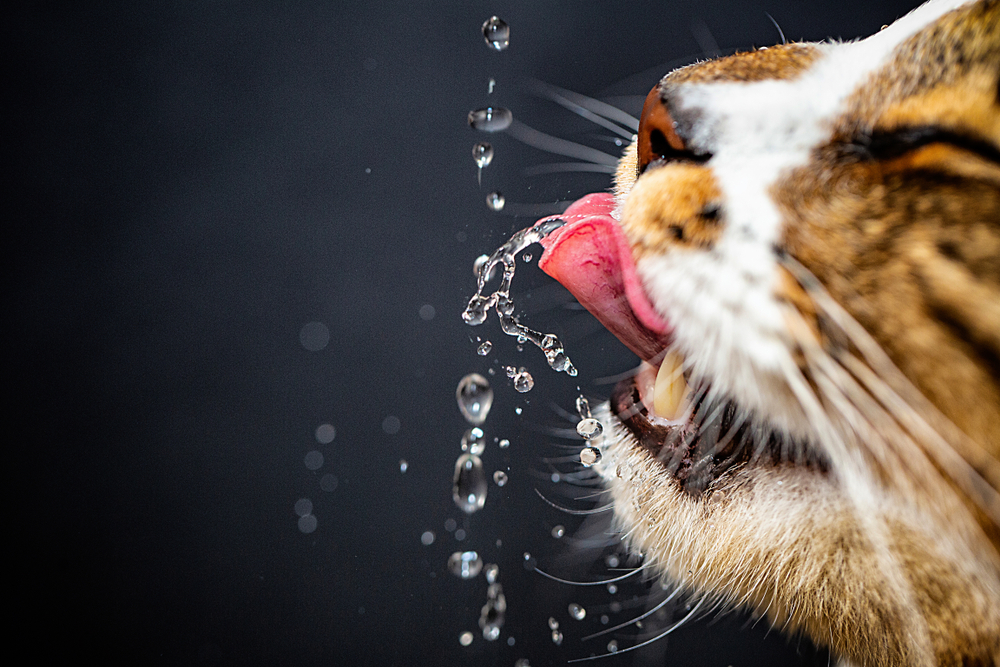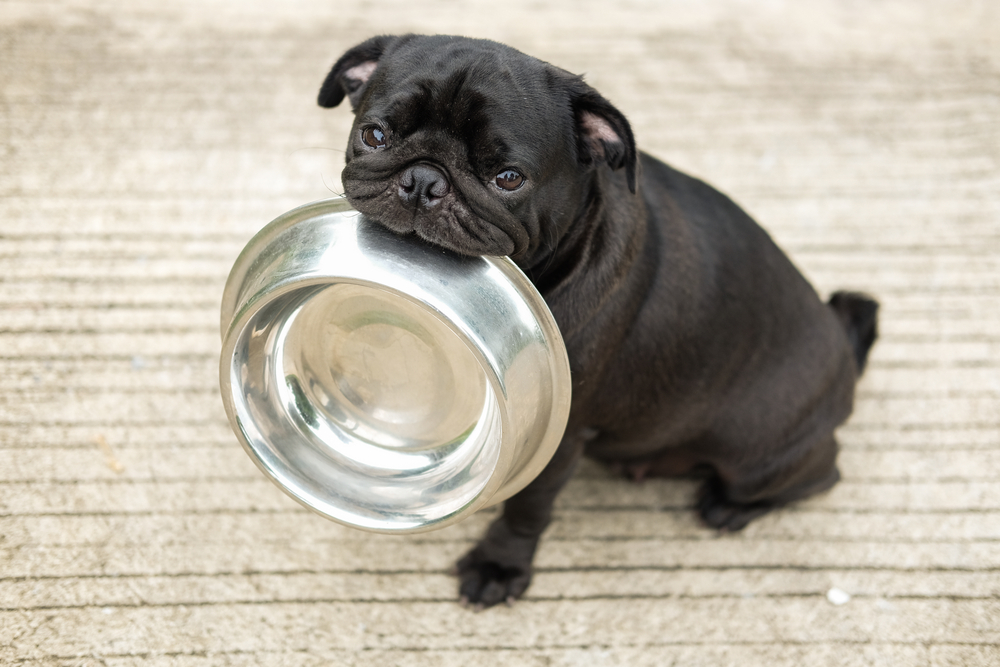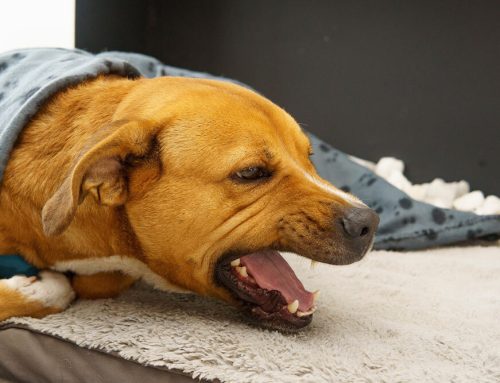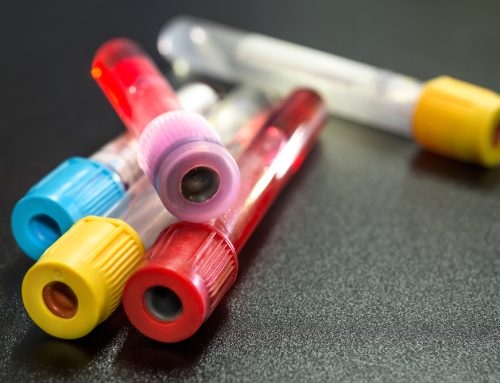You probably don’t give much thought to how quickly your pet empties their food or water bowl. However, the amount your dog or cat eats and drinks provides valuable information about their overall health. If your four-legged friend’s bowls remain full long after you fill them, your pet may be experiencing digestive upset or anxiety about a household change, while persistently empty bowls indicate your furry pal’s metabolism is spiking, or they have a urinary tract problem. If your pet is emptying their food or water bowl more quickly than usual, or leaving the contents untouched, schedule an appointment with our Animal Medical Hospital of Naples team.
My pet is eating less (i.e., anorexia)
When your furry pal has a reduced appetite, their signs can range from uncharacteristically finicky behavior (i.e., mild and temporary) to complete food refusal (i.e., severe). Your pet may suddenly turn up their nose to food for the following reasons:
- Nausea — If your pet’s feeling queasy, they may avoid food and water.
- Parasites — Intestinal parasites, such as roundworms, hookworms, and tapeworms, can reduce puppies’ appetite or cause them total inappetence.
- Food sensitivity or allergy — If your four-legged friend experiences digestive discomfort after every meal, they may forgo eating to avoid associated unpleasant signs.
- Dental pain — Gum or tooth pain may discourage your pet from chewing their food.
- Cancer — Pets with cancer may exhibit flu-like signs that cause inappetence.
- Stress — Stress activates a pet’s fight, flight, or freeze response, which slows the digestive system and redirects energy and blood flow to the muscles and cardiovascular system, leading to inappetence.
- Diet change — If you’ve recently changed your furry pal’s diet or added a new ingredient to their food, they may no longer find their chow palatable, and refuse to eat.
- Medication — Antibiotics, anti-inflammatories, and chemotherapy medications can upset your pet’s digestive tract and reduce their appetite.
My pet is eating more (i.e., polyphagia)
Some pets exhibit an increased appetite by demonstrating uncharacteristic enthusiasm for their meals, while some may take their hunger pangs to more extreme measures. A pet who has a ravenous appetite may steal food from your plate or prevent other household pets from eating their own food. Your hungry four-legged friend may also counter surf or get into the trash bin, ingesting toxic or spoiled foods that can be harmful, or swallowing a foreign body that could obstruct their digestive system. Your furry pal’s extreme hunger may be attributable to one of these common causes:
- Hyperthyroidism in cats — The thyroid gland controls a cat’s metabolism. Therefore, an overactive thyroid can send your feline friend’s appetite into overdrive. Despite their increased food intake, a cat with hyperthyroidism will lose weight and appear unkempt.
- Cushing’s disease — If your dog’s body is producing excess cortisol (i.e., a natural steroid), they may develop Cushing’s disease. A dog with an elevated cortisol level becomes ravenously hungry. Cats rarely develop Cushing’s disease.
- Cancer — Cancer robs your pet’s body of the nutrition they should be getting from their food, leaving them with an insatiable appetite.
- Growth and development — Puppies, kittens, and adolescent pets experience frequent growth spurts in which they require increased calories.
- Medication — Corticosteroid drugs (e.g., prednisone, prednisolone) can make dogs and cats ravenous.
My pet is drinking less water
When the weather cools off after a hot spell, your pet will likely reduce their water intake, which is normal. However, when your dog or cat drinks less or an insufficient amount, they can become dehydrated, having a reduced fluid output and darker, more concentrated urine. A pet’s decreased water consumption may be a result of the following:
- Water aversion — Your pets may refuse to drink if their bowl is dirty or the water is unclean, tainted, or stinky.
- Stress — An anxious pet may hide or avoid their water bowl if it is an exposed area. If a pet’s stress is causing nausea, they may refuse water to avoid worsening digestive discomfort.
- Change to a wet food diet — Fresh, moist, and wet food naturally contains more moisture than dry kibble. If you have changed your pet’s diet from dry to wet food, they will likely drink less water.
- Urinary tract infection (UTI) or inflammation — Although some pets drink more when they have a urinary tract issue, others avoid water altogether.
- Inactivity — Inactive pets or those who infrequently get exercise have lower water intake needs.
- Dental or oral injury — A pet may avoid their water bowl if their mouth or teeth are causing them pain. They likely have underlying dental disease or an oral injury.
My pet is drinking more water (i.e., polydipsia)

Increased thirst, with accompanying increased urine output, can indicate that your pet has an endocrine or urinary system disorder. Another consideration is that your pet may simply be rehydrating themself after intense physical activity or a sun-soaked romp. Your furry pal’s thirst may have increased because of one of these common causes:
- Diabetes — Excessive thirst and urination are dogs’ classic diabetes mellitus signs. An affected pet’s thirst increases, and they urinate more frequently as their body attempts to reduce their elevated blood glucose (i.e., sugar) levels. Diabetes insipidus (i.e., water diabetes), a condition in which antidiuretic hormone (ADH) is either inadequate or not received by the kidneys, causes a dog to be extremely thirsty and eliminate excess water.
- Kidney disease — Rather than properly filtering waste products from the blood, deteriorating kidneys release a significant amount of water in the urine, resulting in increased thirst.
- UTI — Conditions affecting your four-legged friend’s upper or lower urinary tract result in irritation and inflammation, causing an increased urge to urinate. Your pet’s body may also increase water intake in an attempt to flush bacteria from the bladder.
- Dehydration — Pets may become dehydrated after physical exertion, prolonged exposure to warm weather, or excessive fluid loss attributable to vomiting or diarrhea. Severe dehydration is a life-threatening condition that requires veterinary intervention (i.e., fluid therapy).
- Medications — Prescription medications, such as steroids, diuretics, and antiseizure drugs, can increase your pet’s thirst.
Changes to your pet’s appetite and thirst can be the first indication that they are ill. Monitoring your pet’s daily eating and drinking routine and tracking persistent changes can help you recognize when to contact our Animal Medical Hospital of Naples team to schedule your pet’s complete physical exam.







Leave A Comment